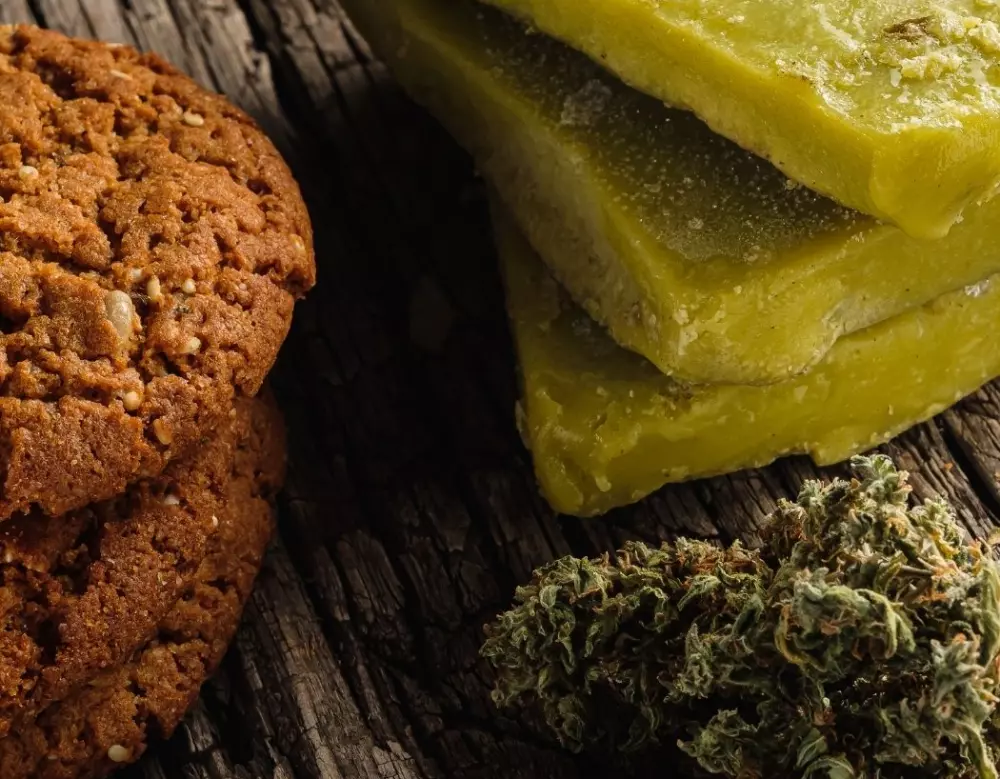For the cooks and bakers among us who enjoy creating cannabis-infused dishes, having cannabutter in the refrigerator ready to go for your favorite edibles is a must-have. As its name suggests, cannabutter is just that: a combination of cannabis and butter.
Humans have been consuming cannabis for things like ritual, sacrament, intoxication, and medicinal benefits for millennia. Cannabis-infused foods as we know them today are a more modern convention, but the reasons for consuming them haven’t changed. Especially for medical cannabis patients or those who have dietary restrictions, infusing cannabutter and making your own edibles at home can not only be a key tool in your medical treatment, but may save you money over the long run.
What Is Cannabutter Used For?
Cannabutter can be used just as you would use regular butter in a recipe. When people think of cannabutter they tend to think about edibles like brownies, cookies, or other baked goods. However, cannabutter can be smeared on toast, used to roast carrots, or mash potatoes, and just in about any other thing you'd use butter for. Cannabutter can be especially useful for medical patients, or any other consumer who prefers to consume by a healthier method than smoking or vaping. And just like any other edible, cannabutter can be made with particular ratios of CBD (a nonintoxicating cannabinoid), and THC (the cannabinoid that gets you high). When crafting homemade cannabutter, be sure to follow your recipe carefully. Unfortunately, infusing your own butter is not as simple as “melt butter, add cannabis.” Dosing and potency for edibles is notoriously tricky, even for professionals. If you do decide to try it on your own, start with a familiar strain whose effects are familiar to you, so you know what to expect.What Are The Benefits of Cannabutter?
As legal cannabis markets expand across the U.S., many consumers new to the plant are drawn in because of its ability to help common conditions typically treated with pharmaceuticals, like chronic pain, anxiety, and insomnia. Research into the medicinal benefits of the plant have repeatedly shown that cannabis may help severely ill patients. The FDA has approved one cannabis-derived drug, Epidiolex, for the treatment of intractable epilepsy conditions Lennox-Gastaut Syndrome and Dravet Syndrome. Cancer patients often turn to cannabis to ease the nausea and vomiting brought on by chemotherapy, and many AIDS patients have used cannabis to increase appetite. Current studies suggest that cannabis temporarily relieves symptoms of Post-Traumatic Stress Disorder (PTSD). There's heaps of anecdotal evidence from consumers and patients supporting the use of cannabis for anxiety, depression, insomnia, social anxiety, autism, etc.. The list goes on and on. However, it is important to remember that anecdotes are not the same as research. As cannabis loses some of its historic stigma, legitimate studies on the plant’s myriad effects have increased. Nonetheless, while cannabis remains federally illegal, roadblocks remain to a thorough understanding of the plant and its healing benefits.How Do I Make Cannabutter?
You can make your own cannabutter at home, but beware. Cannabis decarboxylation — the process of heating cannabis to unlock the effects of THC, CBD, and other cannabinoids - is a smelly proposition. If you have nosy neighbors, or if your landlord prohibits cannabis consumption onsite, you’re better off purchasing cannabutter from your local legal dispensary. Check out our feature on Easy Tips and Tricks to Make Cannabutter, which includes our classic cannabutter recipe. This recipe produces a perfect batch of cannabis butter you can use for baking, frying, or simply spreading on a piece of toast! All you need is:- Your desired dose of decarbed cannabis 2 sticks of unsalted butter
How Much Do I Take?
When you are using cannabutter in recipes, you can use half cannabutter and half regular butter to prevent consuming too much. You can use a teaspoon of cannabutter on toast, but depending on the strength of the cannabutter, you can test it using a dab more or a little less. As with many things, using a little less is far better than using too much! Go low and slow, and enjoy.
